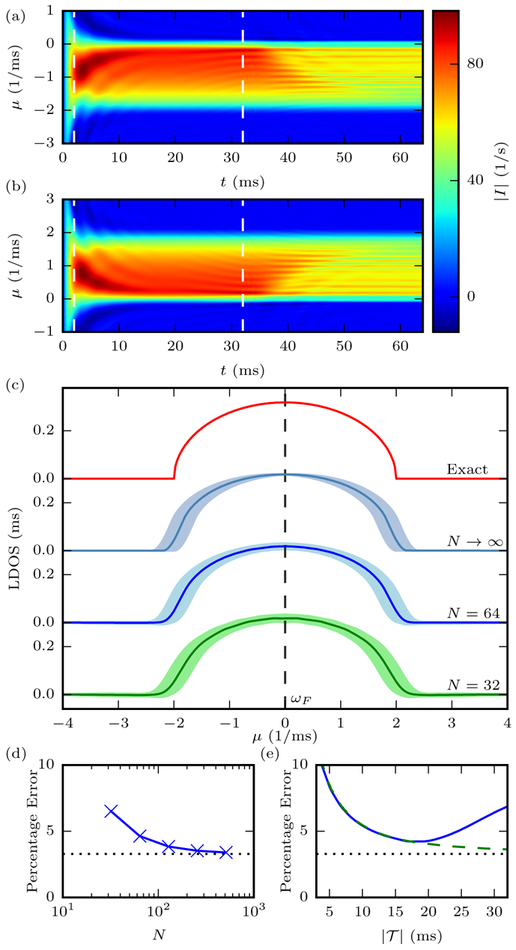FIG. 2.

The current I versus time t for the (a) occupied and (b) unoccupied states using an initially empty and filled , respectively, offset to frequency μ. Here, (a typical cold-atom tunneling frequency), , and the total lattice length is N = 64. (c) The LDOS for determined from Eq. (4) using the average current in the region [demarcated by dashed lines in (a) and (b)], which minimizes transient and edge effects. The error bars (shaded regions) indicate the standard deviation of the current in the region combined with the broadening error . The Fermi level, ωF, is found from the point where the occupied and unoccupied states cross over. (d) Integrated error of the LDOS versus total lattice size and (e) averaging time [for N = 32 (blue solid line) and N = 512 (green dashed line)]. The baseline error [when N → ∞, the dotted line in (d) and (e)] is set by the non-zero , which broadens the actual LDOS [see Eq. (A5)]. For short lattices and times, the error in the LDOS is already only a few percent. Thus, even modestsized systems or calculations can effectively reconstruct the LDOS.
